The 25 most-downloaded Chemical Science articles in the first quarter of 2015 were as follows:
Rhodium-catalyzed C–H functionalization-based approach to eight-membered lactams
Shangze Wu, Rong Zeng, Chunling Fu, Yihua Yu, Xue Zhang and Shengming Ma
Chem. Sci., 2015,6, 2275-2285, DOI: 10.1039/C5SC00092K, Edge Article
Exploiting parameter space in MOFs: a 20-fold enhancement of phosphate-ester hydrolysis with UiO-66-NH2
Michael J. Katz, Su-Young Moon, Joseph E. Mondloch, M. Hassan Beyzavi, Casey J. Stephenson, Joseph T. Hupp and Omar K. Farha
Chem. Sci., 2015,6, 2286-2291, DOI: 10.1039/C4SC03613A, Edge Article
Metal oxidation states in biological water splitting
Vera Krewald, Marius Retegan, Nicholas Cox, Johannes Messinger, Wolfgang Lubitz, Serena DeBeer, Frank Neese and Dimitrios A. Pantazis
Chem. Sci., 2015,6, 1676-1695, DOI: 10.1039/C4SC03720K, Edge Article
Solid state organic amine detection in a photochromic porous metal organic framework
Arijit Mallick, Bikash Garai, Matthew A. Addicoat, Petko St. Petkov, Thomas Heine and Rahul Banerjee
Chem. Sci., 2015,6, 1420-1425, DOI: 10.1039/C4SC03224A, Edge Article
C–H arylation of triphenylene, naphthalene and related arenes using Pd/C
Karl D. Collins, Roman Honeker, Suhelen Vásquez-Céspedes, Dan-Tam D. Tang and Frank Glorius
Chem. Sci., 2015,6, 1816-1824, DOI: 10.1039/C4SC03051F, Edge Article
Adaptive binding and selection of compressed 1,ω-diammonium-alkanes via molecular encapsulation in water
Dan Dumitrescu, Yves-Marie Legrand, Eddy Petit, Arie van der Lee and Mihail Barboiu
Chem. Sci., 2015,6, 2079-2086, DOI: 10.1039/C4SC03945A, Edge Article
Thymine functionalised porphyrins, synthesis and heteromolecular surface-based self-assembly
Anna G. Slater, Ya Hu, Lixu Yang, Stephen P. Argent, William Lewis, Matthew O. Blunt and Neil R. Champness
Chem. Sci., 2015,6, 1562-1569, DOI: 10.1039/C4SC03531C, Edge Article
Structure–activity relationship studies of cyclopropenimines as enantioselective Brønsted base catalysts
Jeffrey S. Bandar, Alexandre Barthelme, Alon Y. Mazori and Tristan H. Lambert
Chem. Sci., 2015,6, 1537-1547, DOI: 10.1039/C4SC02402H, Edge Article
Reversible photo-induced trap formation in mixed-halide hybrid perovskites for photovoltaics
Eric T. Hoke, Daniel J. Slotcavage, Emma R. Dohner, Andrea R. Bowring, Hemamala I. Karunadasa and Michael D. McGehee
Chem. Sci., 2015,6, 613-617, DOI: 10.1039/C4SC03141E, Edge Article
Macrocycles: lessons from the distant past, recent developments, and future directions
Andrei K. Yudin
Chem. Sci., 2015,6, 30-49, DOI: 10.1039/C4SC03089C, Perspective
Rh(III)-catalyzed C–H olefination of N-pentafluoroaryl benzamides using air as the sole oxidant
Yi Lu, Huai-Wei Wang, Jillian E. Spangler, Kai Chen, Pei-Pei Cui, Yue Zhao, Wei-Yin Sun and Jin-Quan Yu
Chem. Sci., 2015,6, 1923-1927, DOI: 10.1039/C4SC03350G, Edge Article
A family of N-heterocyclic carbene-stabilized borenium ions for metal-free imine hydrogenation catalysis
Jeffrey M. Farrell, Roy T. Posaratnanathan and Douglas W. Stephan
Chem. Sci., 2015,6, 2010-2015, DOI: 10.1039/C4SC03675A, Edge Article
Platinum-decorated carbon nanotubes for hydrogen oxidation and proton reduction in solid acid electrochemical cells
V. Sara Thoi, Robert E. Usiskin and Sossina M. Haile
Chem. Sci., 2015,6, 1570-1577, DOI: 10.1039/C4SC03003F, Edge Article
Electrophilic bis-fluorophosphonium dications: Lewis acid catalysts from diphosphines
Michael H. Holthausen, Rashi R. Hiranandani and Douglas W. Stephan
Chem. Sci., 2015,6, 2016-2021, DOI: 10.1039/C5SC00051C, Edge Article
Computational design of molecules for an all-quinone redox flow battery
Süleyman Er, Changwon Suh, Michael P. Marshak and Alán Aspuru-Guzik
Chem. Sci., 2015,6, 885-893, DOI: 10.1039/C4SC03030C, Edge Article
Topochemical conversion of a dense metal–organic framework from a crystalline insulator to an amorphous semiconductor
S. Tominaka, H. Hamoudi, T. Suga, T. D. Bennett, A. B. Cairns and A. K. Cheetham
Chem. Sci., 2015,6, 1465-1473, DOI: 10.1039/C4SC03295K, Edge Article
A comprehensive test set of epoxidation rate constants for iron(IV)–oxo porphyrin cation radical complexes
Mala A. Sainna, Suresh Kumar, Devesh Kumar, Simonetta Fornarini, Maria Elisa Crestoni and Sam P. de Visser
Chem. Sci., 2015,6, 1516-1529, DOI: 10.1039/C4SC02717E, Edge Article
Carbon–hydrogen (C–H) bond activation at PdIV: a Frontier in C–H functionalization catalysis
Joseph J. Topczewski and Melanie S. Sanford
Chem. Sci., 2015,6, 70-76, DOI: 10.1039/C4SC02591A, Minireview
Synthesis by extrusion: continuous, large-scale preparation of MOFs using little or no solvent
Deborah Crawford, José Casaban, Robert Haydon, Nicola Giri, Tony McNally and Stuart L. James
Chem. Sci., 2015,6, 1645-1649, DOI: 10.1039/C4SC03217A, Edge Article
Fluorescent/phosphorescent dual-emissive conjugated polymer dots for hypoxia bioimaging
Qiang Zhao, Xiaobo Zhou, Tianye Cao, Kenneth Yin Zhang, Lijuan Yang, Shujuan Liu, Hua Liang, Huiran Yang, Fuyou Li and Wei Huang
Chem. Sci., 2015,6, 1825-1831, DOI: 10.1039/C4SC03062A, Edge Article
Cu-catalyzed transannulation reaction of pyridotriazoles with terminal alkynes under aerobic conditions: efficient synthesis of indolizines
V. Helan, A. V. Gulevich and V. Gevorgyan
Chem. Sci., 2015,6, 1928-1931, DOI: 10.1039/C4SC03358B, Edge Article
Highly efficient one-pot/one-step synthesis of multiblock copolymers from three-component polymerization of carbon dioxide, epoxide and lactone
Yang Li, Jiali Hong, Renjian Wei, Yingying Zhang, Zaizai Tong, Xinghong Zhang, Binyang Du, Junting Xu and Zhiqiang Fan
Chem. Sci., 2015,6, 1530-1536, DOI: 10.1039/C4SC03593C, Edge Article
A hydrazone-based covalent organic framework for photocatalytic hydrogen production
Linus Stegbauer, Katharina Schwinghammer and Bettina V. Lotsch
Chem. Sci., 2014,5, 2789-2793, DOI: 10.1039/C4SC00016A, Edge Article
Formation of a C–C double bond from two aliphatic carbons. Multiple C–H activations in an iridium pincer complex
Alexey V. Polukeev, Rocío Marcos, Mårten S. G. Ahlquist and Ola F. Wendt
Chem. Sci., 2015,6, 2060-2067, DOI: 10.1039/C4SC03839H, Edge Article
On the formation of anions: frequency-, angle-, and time-resolved photoelectron imaging of the menadione radical anion
James N. Bull, Christopher W. West and Jan R. R. Verlet
Chem. Sci., 2015,6, 1578-1589, DOI: 10.1039/C4SC03491K, Edge Article
These articles are all free to download until 6th July. Access is free through a registered RSC account – click here to register
Chemical Science is the Royal Society of Chemistry’s flagship journal, publishing research articles of exceptional significance and high-impact reviews from across the chemical sciences. It has been Gold Open Access since January 2015. The journal’s latest (2013) Impact Factor is 8.6.
Submit your exceptional research to Chemical Science today!
Stay up to date with Chemical Science
Be among the first to hear about the newest articles being published – Sign-up to our journal news alert to receive information about most read articles, journal news, as well as calls for papers and invitations.











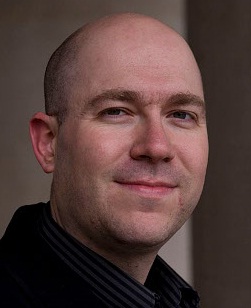
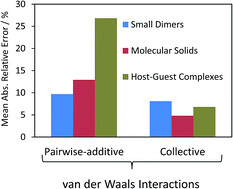
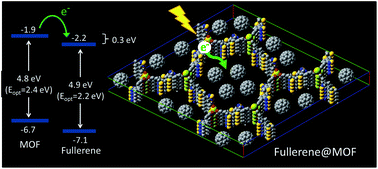
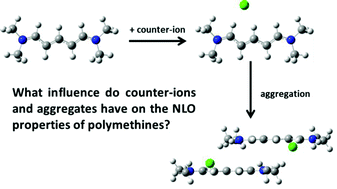
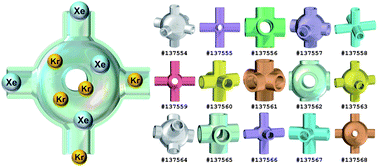
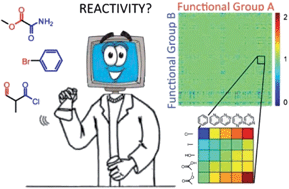
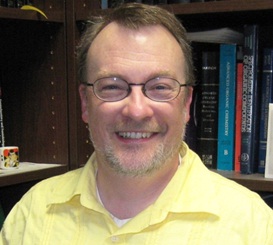
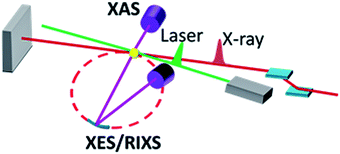
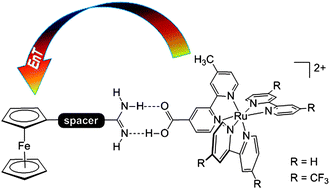
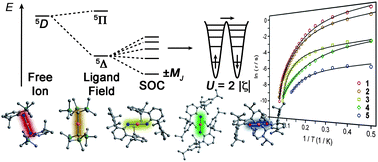
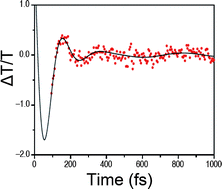
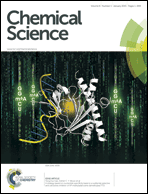 Have you read the 25 most downloaded Chemical Science articles from October–December 2014?
Have you read the 25 most downloaded Chemical Science articles from October–December 2014?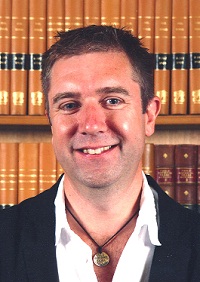
 Biography
Biography
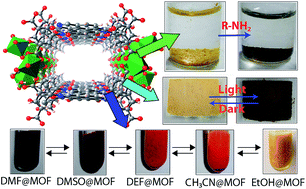
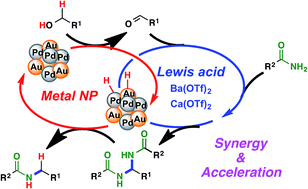
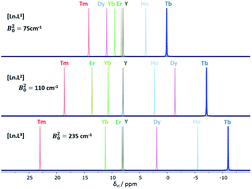
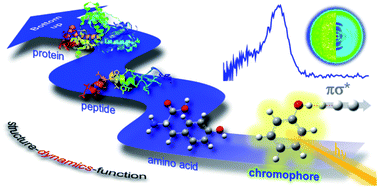
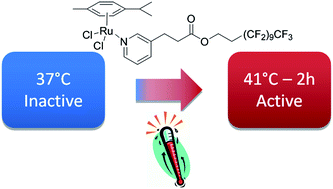
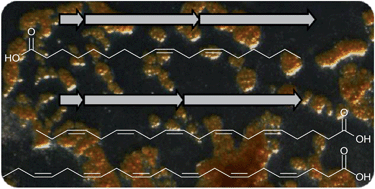
 Scientists in China have developed
Scientists in China have developed  Inspired by nature, scientists in Australia have
Inspired by nature, scientists in Australia have